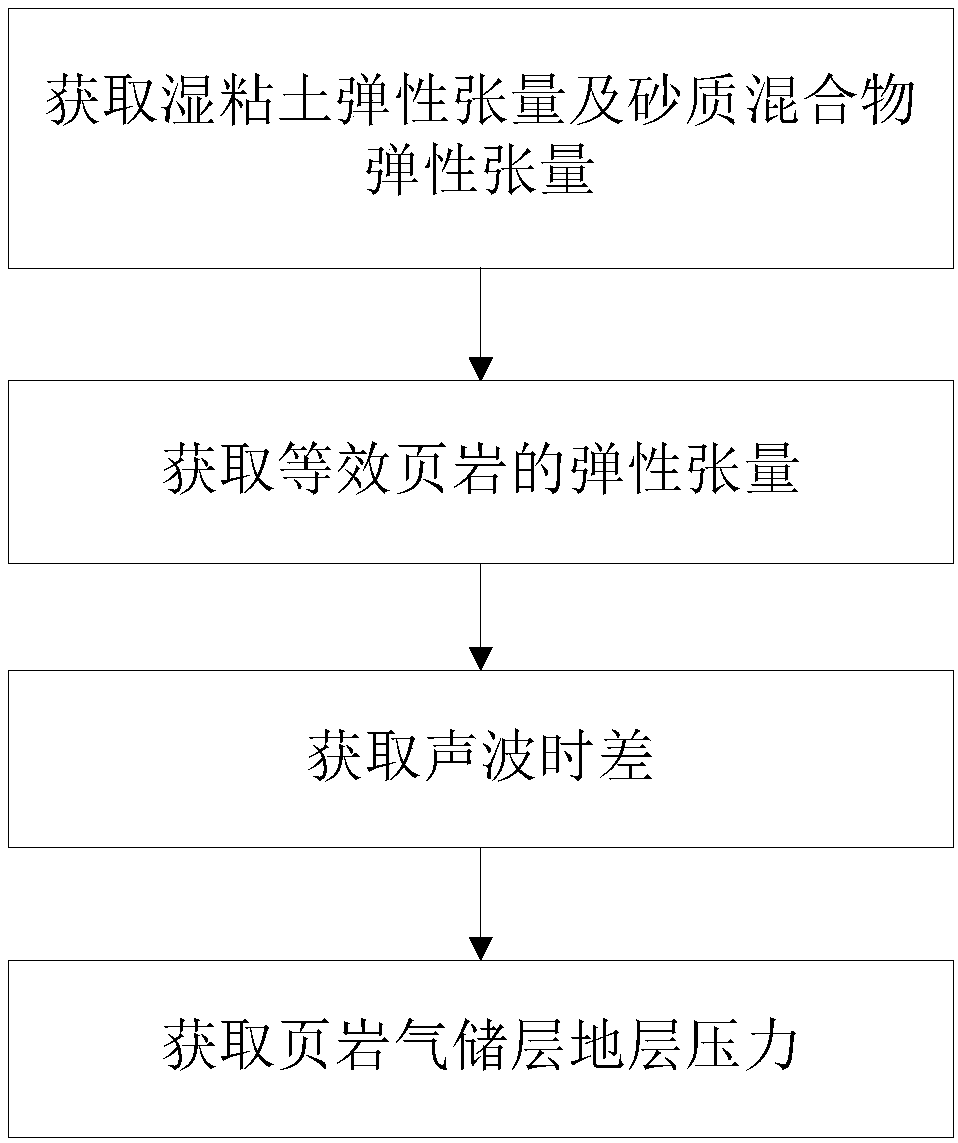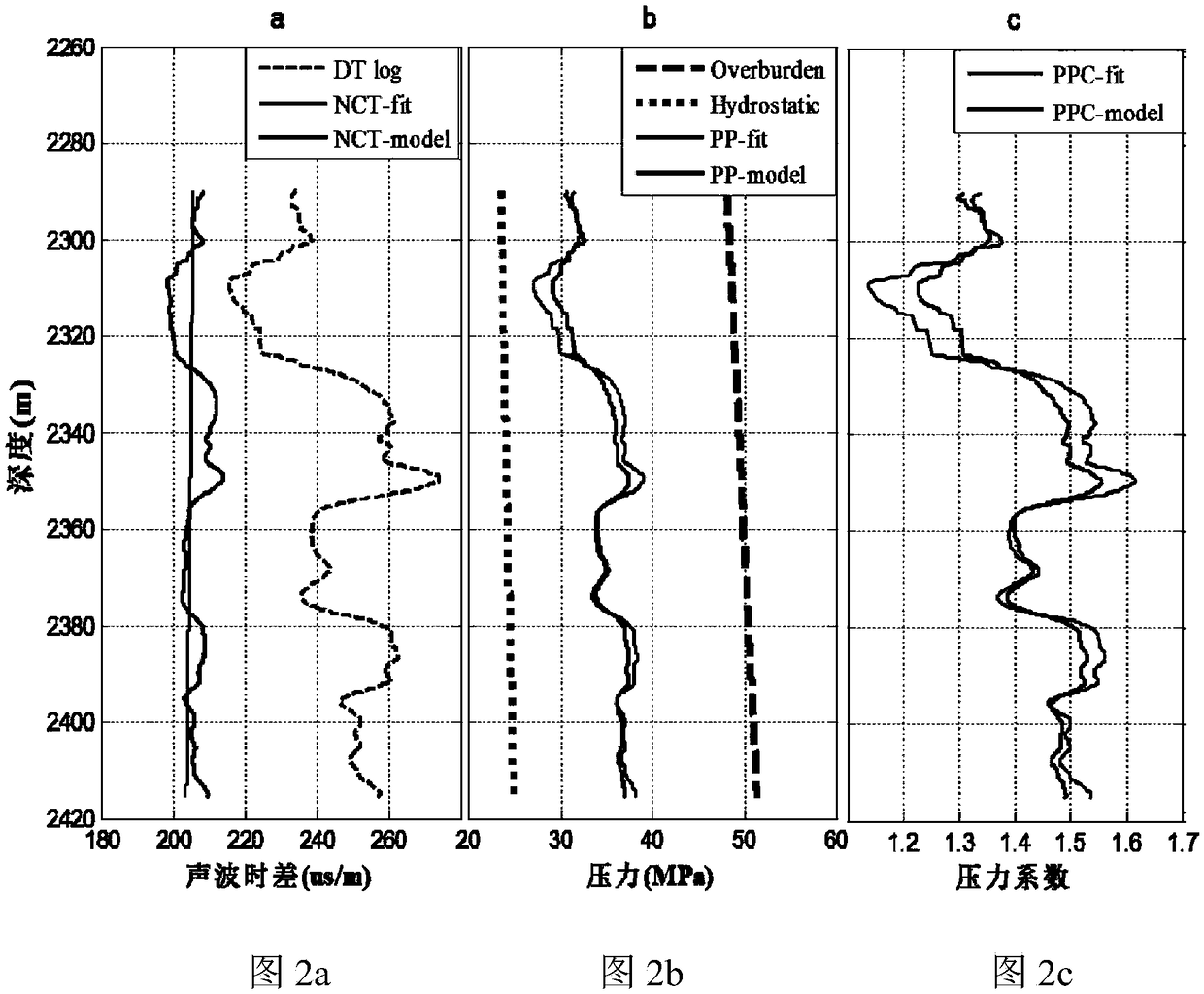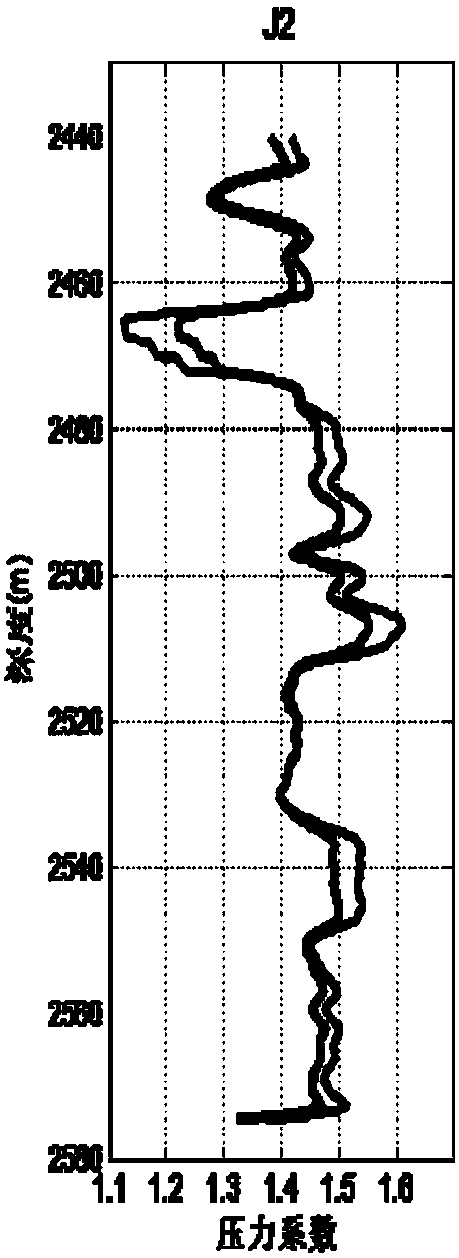Shale gas reservoir formation pressure calculation method and computer readable storage medium
A technology of formation pressure and calculation method, which is applied in seismology for well logging and other fields, and can solve problems such as not considering the influence of hydrocarbon-generating substances
- Summary
- Abstract
- Description
- Claims
- Application Information
AI Technical Summary
Problems solved by technology
Method used
Image
Examples
Embodiment approach 1
[0084] In this embodiment, the shale gas reservoir formation pressure calculation method according to the present invention includes:
[0085] Obtain the elastic tensor of wet clay and sandy mixture based on logging data;
[0086] Based on the elastic tensor of the wet clay and the elastic tensor of the sandy mixture, obtain the elastic tensor of equivalent shale;
[0087] Obtaining the acoustic time difference based on the elastic tensor of the equivalent shale;
[0088] Based on the acoustic time difference, the formation pressure of the shale gas reservoir is obtained.
[0089] Specifically, the normal compaction trend line is constructed through the present invention, which can reduce the uncertainty of trend line establishment when the measured pressure data is insufficient, and can effectively consider the influence of lithology on the trend line, and solve the problem of traditional methods when sand-shale interbedded. The unreasonableness of sharing the compaction tr...
Embodiment 1
[0138] The actual logging data of a work area is used to illustrate the implementation process of this method and compare it with the pressure prediction effect of traditional methods.
[0139] figure 1 A flow chart of a method for calculating formation pressure of a shale gas reservoir according to the present invention is shown. Figure 2a-2c It shows a schematic diagram of the calculation results of the pressure coefficient of the target layer of well J1 in the work area according to an embodiment of the present invention. Figures 3a-3d Respectively show a schematic diagram of predicting and calculating the pressure coefficients of the four adjacent wells of well J1 according to an embodiment of the present invention.
[0140] like figure 1 , 2a As shown in , 2b, 2c, 3a, 3b, 3c and 3d, the target layer in the study area is a shale gas reservoir, and the pressure information we have obtained is limited, only the variation range of the pressure coefficient is [1.2,1.55],...
Embodiment approach 2
[0143] In this embodiment, according to another aspect of the present invention, a computer-readable storage medium is provided, on which a computer program is stored, and the computer-readable storage medium includes:
[0144] Obtain the elastic tensor of wet clay and sandy mixture based on well logging data;
[0145] Based on the elastic tensor of the wet clay and the elastic tensor of the sandy mixture, obtain the elastic tensor of equivalent shale;
[0146] Obtaining the acoustic time difference based on the elastic tensor of the equivalent shale;
[0147] Based on the acoustic time difference, the formation pressure of the shale gas reservoir is obtained.
[0148] In one example, the obtaining the elastic tensor of wet clay based on the well logging data includes: obtaining the total porosity and clay volume content of the rock based on the well logging data, and obtaining the total porosity and clay volume content based on the total rock porosity and the clay volume con...
PUM
| Property | Measurement | Unit |
|---|---|---|
| Bulk modulus | aaaaa | aaaaa |
| Shear modulus | aaaaa | aaaaa |
Abstract
Description
Claims
Application Information
 Login to View More
Login to View More - R&D
- Intellectual Property
- Life Sciences
- Materials
- Tech Scout
- Unparalleled Data Quality
- Higher Quality Content
- 60% Fewer Hallucinations
Browse by: Latest US Patents, China's latest patents, Technical Efficacy Thesaurus, Application Domain, Technology Topic, Popular Technical Reports.
© 2025 PatSnap. All rights reserved.Legal|Privacy policy|Modern Slavery Act Transparency Statement|Sitemap|About US| Contact US: help@patsnap.com



